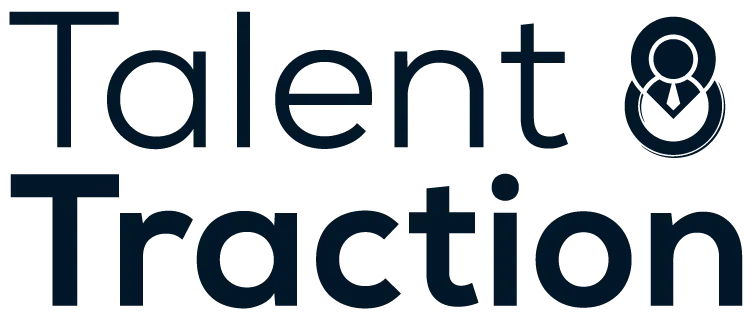
Navigating Supply Chain Disruptions in 2025
The manufacturing sector is grappling with ongoing supply chain disruptions, impacting everything from raw materials to delivery timelines. Whether triggered by natural disasters, geopolitical instability, or labor shortages, these issues can cripple production and result in significant financial losses.
This blog will delve into the impact of supply chain disruptions on manufacturing, essential strategies for maintaining workforce stability, and how partners like Talent Traction can help manufacturers remain resilient.
The Reality of Supply Chain Disruptions
Supply chains are the backbone of manufacturing, but they’re also its Achilles’ heel. From the COVID-19 pandemic to the 2021 Ever Given ship blockage in the Suez Canal, recent years have shown how fragile global networks can be.
A 2024 ManpowerGroup survey found that 75% of manufacturers struggle to fill skilled roles due to labor shortages, while events like port congestion, extreme weather, and trade disputes—such as the proposed 2025 Trump tariffs—continue to disrupt material flows.
The CNBC Supply Chain Survey (April 2025) notes that 63% of supply chain leaders expect a recession due to rising costs and reduced demand, further complicating workforce planning.
These disruptions hit hard: delayed shipments, halted production, and soaring costs. A 2023 Zignify report estimates disruptions increase expenses by 3–5% and cut sales by 7%. For manufacturers, an unstable workforce—marked by turnover, skill gaps, or low morale—only makes things worse, as employees scramble to adapt to shifting demands. Building workforce stability is critical to navigating these challenges and keeping your operation resilient.
Why Workforce Stability Matters
A stable workforce isn’t just about having enough bodies on the shop floor—it’s about having skilled, engaged employees who can pivot during disruptions. When supply chains falter, workers face increased stress, changing roles, and uncertainty about job security, which can tank morale and productivity. A 2023 PwC study found that 35% of manufacturing workers worry about job stability during disruptions, leading to higher turnover. Losing a skilled machine operator or logistics coordinator at a critical moment can cripple your ability to respond to a crisis, costing time and money—SHRM pegs replacement costs at $4,700 per hire.
Stability means retaining talent, equipping them with versatile skills, and fostering a culture that embraces adaptability. A resilient workforce can handle sudden shifts, like rerouting production due to a supplier shutdown or adopting new tech to track inventory.
Strategies for Workforce Stability
Cross-Training for Flexibility
Supply chain disruptions often force workers into new roles—like an operator stepping into logistics when shipments are delayed. Cross-training employees to handle multiple tasks ensures your team can adapt without missing a beat. A 2024 Supply Chain Connect article emphasizes that cross-training fosters agility, mitigating the impact of labor shortages.
How to do it:
Develop a cross-training program with clear skill modules, using platforms like Tooling U-SME for courses in CNC operation, logistics, or automation. Recruiters like Talent Traction can identify candidates with versatile skill sets.
Upskilling for Resilience
Disruptions often require new skills, especially as manufacturers adopt technologies like AI, IoT, and predictive analytics. The 2024 World Economic Forum report notes that 60% of manufacturing workers need reskilling.
How to do it:
Partner with platforms like Coursera or Degreed for courses in supply chain analytics or green manufacturing. Talent Traction can source candidates already trained in these fields.
Strengthening Employee Engagement
Disruptions breed uncertainty, which can erode morale and drive turnover. A 2024 Gallup study found that high engagement reduces turnover by 23%.
How to do it:
Hold regular town halls, recognize contributions publicly, and create a culture of collaboration. Talent Traction can advise on retention strategies.
Leveraging Automation to Ease Workforce Pressure
Labor shortages, a top issue per the 2024 ASCM Supply Chain Stability Index, exacerbate disruption impacts. Automation can fill gaps, handling repetitive tasks and freeing workers for complex roles.
How to do it:
Invest in AI-driven tools like Oracle’s supply chain solutions or IoT devices. Train workers to operate these systems. Talent Traction can find tech-savvy workers to bridge automation and human efforts.
Building Contingency Plans for Labor
Disruptions like strikes or sudden supplier shutdowns can leave you short-staffed. A 2024 DCKAP article stresses the importance of workforce contingency planning.
How to do it:
Maintain a pool of temp-to-hire workers through recruiters like Talent Traction and create a crisis response playbook.
Prioritizing Workforce Safety and Well-Being
Disruptions often increase workplace stress. A 2024 EY report found that 47% of companies faced workforce disruptions due to safety concerns.
How to do it:
Implement ergonomic workstations, mental health resources, and flexible schedules. Talent Traction can help recruit workers trained in safety compliance.
The Role of Recruitment in Workforce Stability
Recruitment is the foundation of a stable workforce during supply chain disruptions. A 2024 Accenture report emphasizes reconciling critical skills to meet near-term and future demands.
How recruiters help:
Sourcing adaptable talent: Talent Traction leverages AI to find candidates with versatile skills.
Temp-to-hire solutions: Test workers during disruptions before permanent hires.
Retention strategies: Advise on competitive pay, benefits, and growth paths.
With 80% of supply chain leaders expecting ongoing challenges, recruiters are vital for building a resilient workforce.
FAQs
How do disruptions impact workforce stability?
Disruptions create uncertainty, lowering morale and increasing turnover, according to a 2023 PwC study.
Why is cross-training important?
It equips workers for multiple roles, ensuring flexibility, per Supply Chain Connect.
How can automation help?
Automation handles repetitive tasks but requires skilled staff, as emphasized in the 2024 Extensiv report.
What role do recruiters play?
Talent Traction sources adaptable talent, offers temp-to-hire solutions, and supports retention.
How do I retain workers during disruptions?
Engage employees with clear communication, recognition, and growth opportunities, reducing turnover by 23%, according to Gallup.




Facebook
LinkedIn
Youtube
Instagram